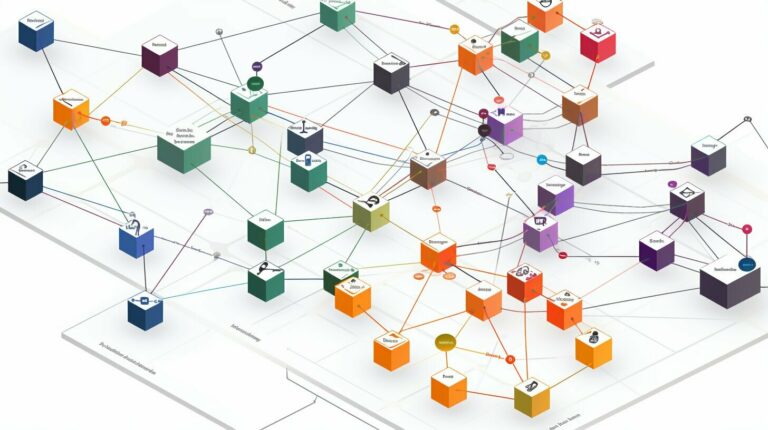In today’s world of complex microservices architectures, having a robust observability strategy is essential. One key component of this strategy is centralized logging.
Centralized logging is a practice where logs generated by multiple microservices are aggregated into a single location for storage and analysis. This allows for easier log management, efficient log processing, and streamlined decision-making.
Key Takeaways:
- Centralized logging is crucial for effective microservices observability.
- It involves aggregating logs from multiple microservices into a single location for analysis and storage.
- Centralized logging improves system performance, troubleshooting, and decision-making.
What is Centralized Logging?
Centralized logging refers to the practice of collecting and storing logs from multiple microservices in a single location. These logs contain valuable information about the performance, behavior, and errors of individual microservices, which can be analyzed to improve system observability and reliability.
The purpose of centralized logging is to simplify log management and enable efficient log analysis. Without centralized logging, logs from different microservices are scattered across multiple locations, making it difficult to identify patterns and troubleshoot issues. Centralized logging makes it possible to collect, aggregate, and search logs from multiple microservices in a single location, allowing for easier troubleshooting and faster decision-making.
Benefits of Centralized Logging
Centralized logging provides numerous benefits for microservices observability. By using a centralized log solution, organizations can simplify log management and enable efficient log aggregation, facilitating log analysis and monitoring.
Centralized logging also provides a centralized storage solution for logs, ensuring that data is easily accessible in one location. This not only reduces the risk of data loss but also streamlines the troubleshooting process. Rather than searching through various microservices to find the root cause of a problem, developers can quickly and easily analyze logs from a single location, improving system performance and minimizing downtime.
In addition, centralized logging allows for more streamlined decision-making by enabling real-time log analysis. By monitoring logs in real-time, organizations can quickly identify and respond to issues, making critical decisions faster and more efficiently.
Implementing Centralized Logging
Implementing centralized logging in a microservices environment requires careful planning and execution. Here are some best practices to consider:
Select the Right Tools: Choose the appropriate centralized logging tools that suit your specific needs. Ensure the tools you choose can handle the scale and complexity of your microservices infrastructure.
Log Search: Use log search tools that can quickly retrieve relevant log data, allowing for efficient troubleshooting and analysis.
Log Processing: Implement log processing tools to ensure that logs are parsed, standardized, and enriched before being sent to the central logging system.
Integration with Existing Logging Frameworks: Ensure that the centralized logging system integrates well with your existing logging frameworks. This will allow for easy migration of logs and ensure a seamless transition to the new system.
Log Collection Strategies
When implementing centralized logging, it’s important to use effective log collection strategies. Here are some tips:
- Define log collection policies and guidelines to ensure that all microservices are logging the necessary information.
- Implement automated log collection to reduce manual effort and ensure consistency in log collection across all microservices.
- Use log collectors that can handle different log formats, protocols, and transport mechanisms.
By following these best practices and log collection strategies, you can implement an effective centralized logging system in your microservices architecture.
Best Practices for Centralized Logging
Effective centralized logging can be achieved by implementing the following best practices:
- Define clear log management policies that outline what data is collected, where it is stored, and how long it is retained. This helps to ensure regulatory compliance and prevent data breaches.
- Establish log analysis workflows that enable quick and efficient identification of issues and anomalies. This can be achieved by using tools that provide real-time log monitoring and alerting capabilities.
- Ensure the security and privacy of log data by using encryption, access controls, and other security measures. It is also important to regularly audit and review access logs to prevent unauthorized access.
- Regularly review and analyze log data to identify patterns, trends, and potential issues. This helps to improve system performance, troubleshoot problems, and make better decisions.
By following these best practices and using the right centralized logging tools and solutions, organizations can enhance their microservices observability and improve their overall system performance and resilience.
Example of Effective Log Management Policy
We collect log data from all microservices in our system and store it securely in a centralized repository for a maximum of 90 days, unless retention is required for compliance or legal reasons. Our policy outlines clear procedures for log collection, analysis, monitoring, and retention, and limits access to authorized personnel only. We regularly audit and review our logs to identify potential security threats and improve system performance.
Centralized Logging Tools and Solutions
Implementing centralized logging in a microservices architecture requires the use of appropriate tools and solutions. Here are some popular options:
| Tool/Solution | Description | Features | Pricing | Integration |
|---|---|---|---|---|
| ELK Stack | A powerful open-source platform for log management and analysis. | Log collection, aggregation, parsing, and analysis. Real-time monitoring and alerting. | Free and open-source. | Integration with a wide range of systems, including Docker, Kubernetes, and AWS. |
| Splunk | A popular commercial solution for log management and analysis. | Indexing, searching, and reporting on logs. Advanced visualization and analytics. | Starts at $150/month. | Integrates with various systems, including AWS, Azure, and Docker. |
| Fluentd | An open-source log collector and aggregator. | Collects and normalizes logs from multiple sources. Supports various output plugins. | Free and open-source. | Integrates with many systems, including Kubernetes, Prometheus, and Elasticsearch. |
| Graylog | A self-hosted log management platform. | Collects, indexes, and analyzes logs. Offers flexible alerting and notification. | Starts at $150/month. | Compatible with various systems, such as Docker, AWS, and GCP. |
When selecting a centralized logging tool, it’s essential to consider factors like scalability, ease of use, and integration capabilities. Choosing the right tool can significantly enhance log management and analysis, leading to better decision-making and improved system performance.
Conclusion
Centralized logging plays a critical role in microservices observability. By collecting and analyzing log data from multiple microservices in a single location, it enables system administrators to monitor system performance, troubleshoot issues quickly, and make informed decisions based on data-driven insights.
As discussed in this article, centralized logging offers numerous benefits, including simplified log management, efficient log aggregation, streamlined log analysis and monitoring, and secure and centralized log storage. By implementing centralized logging, organizations can optimize their microservices architecture and improve their overall system reliability and performance.
Takeaways
When designing your microservices architecture, remember the following:
- Centralized logging is crucial for microservices observability.
- Centralized logging allows for the collection, aggregation, storage, and analysis of logs from multiple microservices in a single location.
- Effective implementation of centralized logging requires careful consideration of log search and processing tools and integration with existing logging frameworks.
- Best practices for centralized logging include defining log management policies, establishing log analysis workflows, and ensuring the security and privacy of log data.
- Popular centralized logging tools and solutions are available in the market, each with unique features, pricing models, and integration capabilities.
By following these best practices and choosing the right tools, you can ensure that your microservices architecture is scalable, reliable, and efficient.







